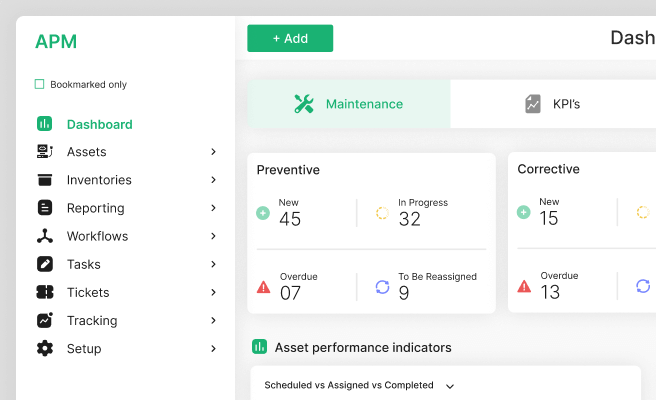Innovation Metrics
<p>Innovation metrics are essential for organizations looking to measure and manage their innovation processes effectively. In the fast-paced world of digital design, particularly within the climate tech sector, having the right metrics in place can drive sustainable growth and help companies stay competitive. Innovation metrics provide a quantitative basis for evaluating the success of new initiatives and ensuring alignment with business goals.</p>
<p>Historically, innovation has been challenging to quantify due to its subjective nature. However, with the advent of data analytics and digital tools, businesses can now leverage various metrics to track their innovation efforts. This shift has been particularly relevant for climate tech companies, which are under pressure to deliver impactful and sustainable products.</p>
<h2>Types of Innovation Metrics</h2>
<p>Innovation metrics can be broadly categorized into input, process, and output metrics. Each category provides unique insights into different aspects of the innovation journey.</p>
<h3>Input Metrics</h3>
<p>Input metrics focus on the resources and efforts dedicated to innovation. Examples include:</p>
<ul>
<li>R&D expenditure: The amount of money invested in research and development.</li>
<li>Number of innovation projects: The total count of ongoing and planned innovation initiatives.</li>
<li>Talent allocation: The percentage of staff time dedicated to innovation-related activities.</li>
</ul>
<h3>Process Metrics</h3>
<p>Process metrics assess the efficiency and effectiveness of the innovation process. Key process metrics include:</p>
<ul>
<li>Time to market: The duration from ideation to product launch.</li>
<li>Stage-gate success rates: The percentage of projects advancing through each development phase.</li>
<li>Collaboration frequency: The number of cross-functional team interactions.</li>
</ul>
<h3>Output Metrics</h3>
<p>Output metrics measure the tangible results of innovation efforts. These metrics often include:</p>
<ul>
<li>Revenue from new products: The income generated from recently launched products.</li>
<li>Market share growth: The increase in market share attributed to innovative products.</li>
<li>Patent filings: The number of patents filed as a result of innovation activities.</li>
</ul>
<h2>Implementing Innovation Metrics</h2>
<p>For innovation metrics to be effective, they must be implemented strategically. Companies should align their metrics with overall business objectives and ensure they are actionable. Here are some steps to implement innovation metrics successfully:</p>
<h3>Identify Key Objectives</h3>
<p>Start by defining what success looks like for your organization. For climate tech companies, this might include achieving sustainability targets or reducing carbon emissions through innovative products. Align your metrics with these objectives to ensure they drive meaningful outcomes.</p>
<h3>Choose the Right Metrics</h3>
<p>Select a balanced mix of input, process, and output metrics. Ensure these metrics are relevant to your industry and organizational goals. For example, a climate tech company might prioritize metrics like R&D expenditure on sustainable technologies and the time to market for eco-friendly products.</p>
<h3>Leverage Data Analytics Tools</h3>
<p>Utilize data analytics tools to collect and analyze metric data. Tools like <a href="https://www.tableau.com" style="color: #2896FF; text-decoration: underline;">Tableau</a> and <a href="https://www.powerbi.com" style="color: #2896FF; text-decoration: underline;">Power BI</a> can provide valuable insights and visualizations to track progress and identify areas for improvement.</p>
<h3>Regularly Review and Adjust</h3>
<p>Innovation metrics should be reviewed periodically to ensure they remain relevant and accurate. Adjust your metrics as needed based on changing business goals or market conditions.</p>
<h2>Real-World Examples</h2>
<p>Several climate tech companies have successfully implemented innovation metrics to drive their growth. For instance, <a href="https://www.climeworks.com" style="color: #2896FF; text-decoration: underline;">Climeworks</a>, a leader in carbon capture technology, uses a mix of R&D expenditure and time-to-market metrics to ensure their projects align with sustainability goals. Similarly, <a href="https://www.tesla.com" style="color: #2896FF; text-decoration: underline;">Tesla</a> tracks revenue from new products and market share growth to measure the impact of their innovative electric vehicles.</p>
<h2>Conclusion</h2>
<p>Innovation metrics are crucial for managing and measuring the impact of new initiatives. By selecting the right metrics and aligning them with organizational objectives, companies can drive sustainable growth and stay competitive. For climate tech companies, these metrics not only measure success but also ensure that innovation efforts contribute to broader sustainability goals.</p> <p>Increase user engagement that converts your demos into sales. Optimise your UX strategies with our audits.
<p>Fill out the <a href="https://tally.so/r/n97pxQ" style="color:#2896FF; text-decoration:underline;">UX Audit form</a> to get started. Ready to discuss your needs? <a href="https://cal.com/akhilak/what-if-design?duration=25" style="color:#2896FF; text-decoration:underline;">Book a consultation call</a> with us today.</p></p>

Let's scale your impact with great design.
Free consultation, no sales pitch
Thank you! Your submission has been received!
Oops! Something went wrong while submitting the form.
Let’s talk
Nothing great is built alone.
Let’s connect about your vision, our work and how we can collaborate.
Get in touch

